By Soph Boobyer, Sarah Myerscough, and Lottie Hughes
Rhythmic gestures and evolving figuration – to bind body and clay feels intrinsic. Yet, amongst the suggestions of a shapely Amphora, or fleshy textures of leather-hard clays, there is a yearning to expand upon ceramic practices as informed by the traces of a living body.
‘Earthly Bodies’ is the third major ceramic exhibition at Sarah Myerscough Gallery – following on from its forebears, ‘Random Growth’ (2015-2016) and ‘Tectonics’ (2019) that explored anarchic and geodic tendencies in contemporary ceramics respectively. This new exhibition looks at sensibilities of the corporeal and topographical, through a selection of works aware of a body in space: of figuration, reciprocity and of the myriad ways movement and transcendence become archived through bodies.
A likeness to the human physique has long appeared throughout ceramic making. From ancient ritualistic pots evoking sensuous figurative curves – opening rims drawn in and down and rounded with their given anatomical namesakes – to more recent works such as Antony Gormley’s ‘Field (England)’ (1993) made of (and by) a manifold of figures. Such bodily resemblances are realised in Julian Stair’s mediation of personhood through his powerfully thrown works. Transcending embodiment or representation of the human figure, he combines the donated ashes of loved ones lost to COVID-19 as physical matter into the clay body of his funerary-wares. Their corporeal stature and delineation pay homage to those lost, whilst simultaneously continuing themes of containment and bodily metamorphosis.
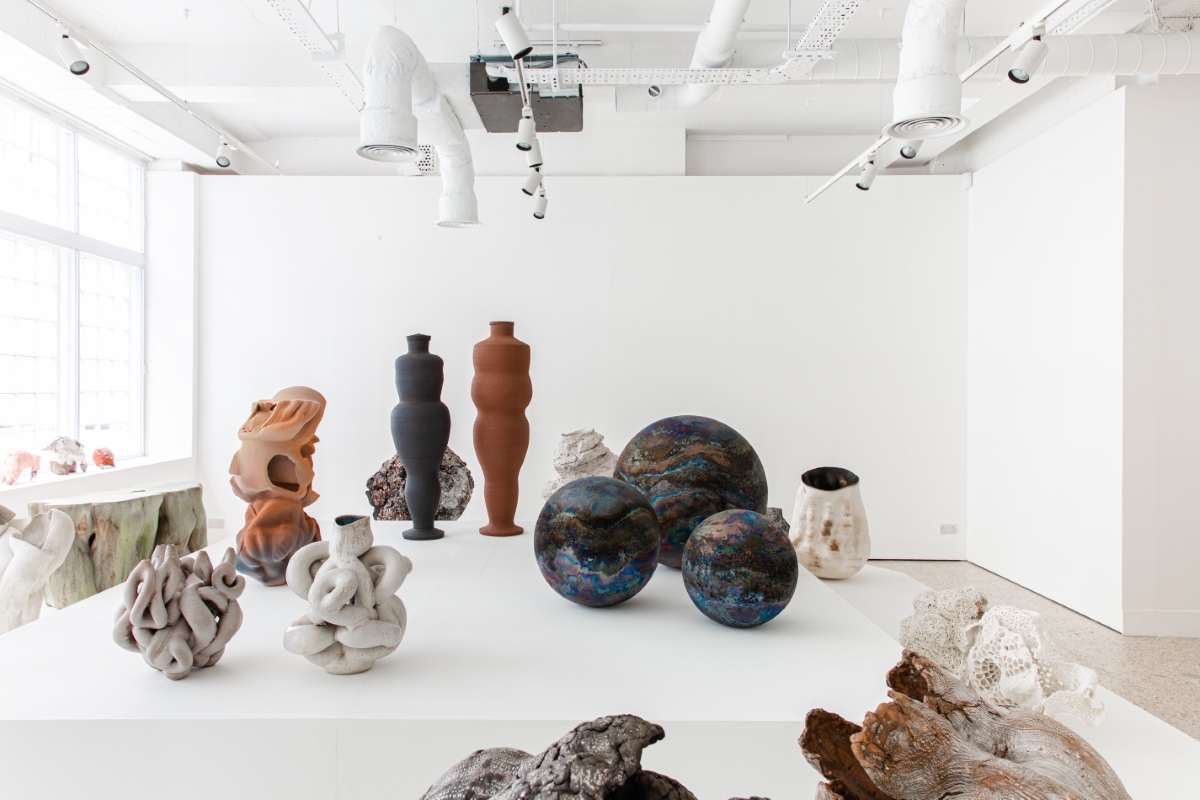
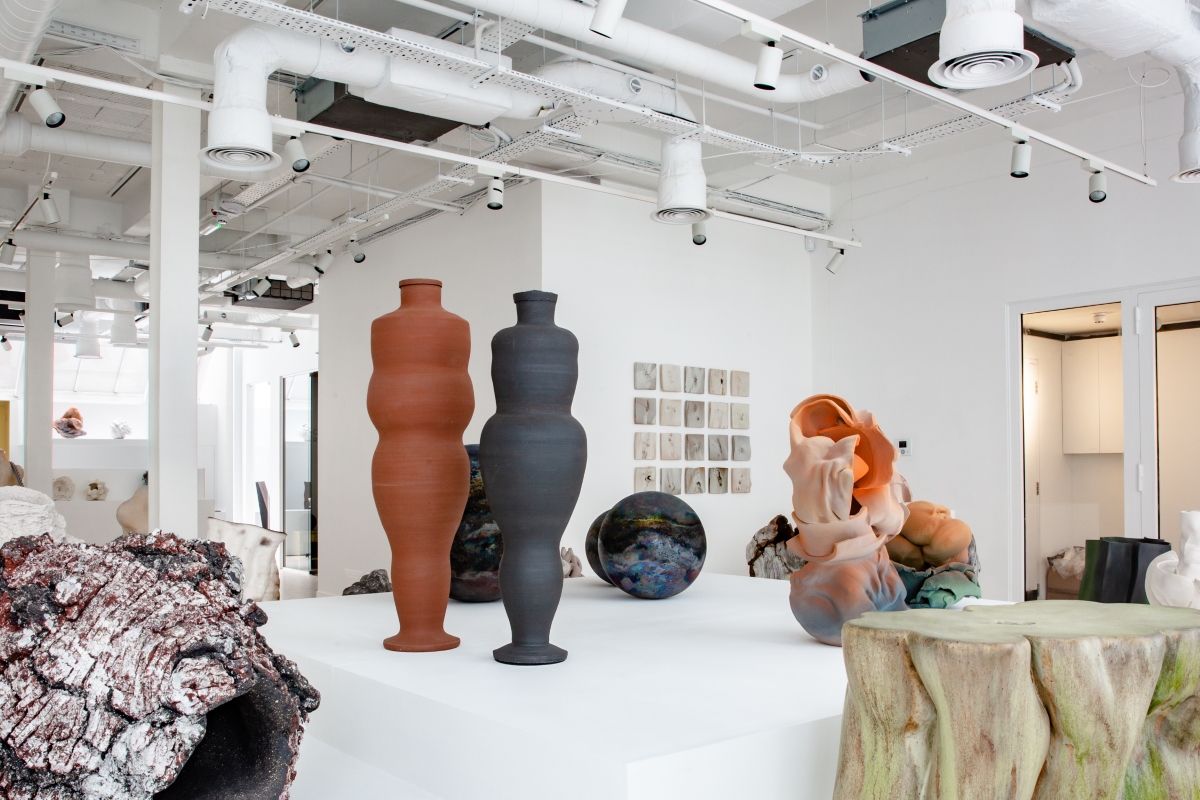
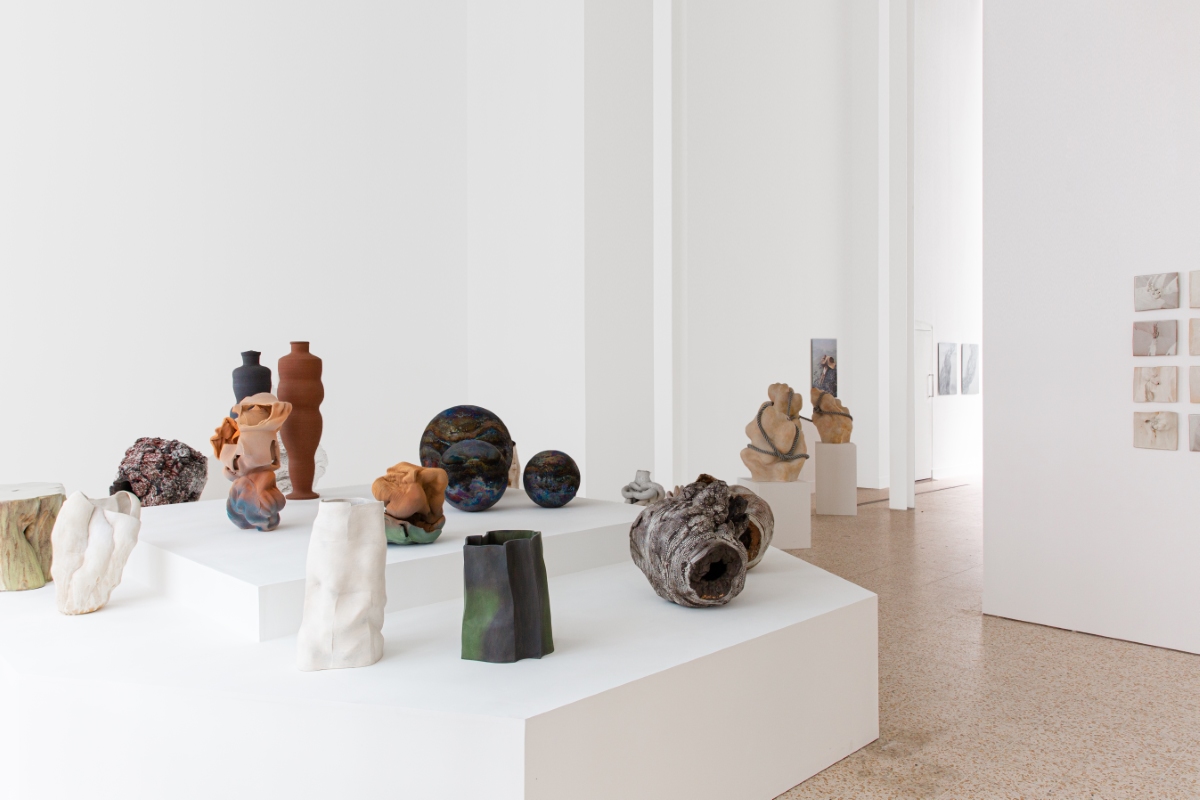
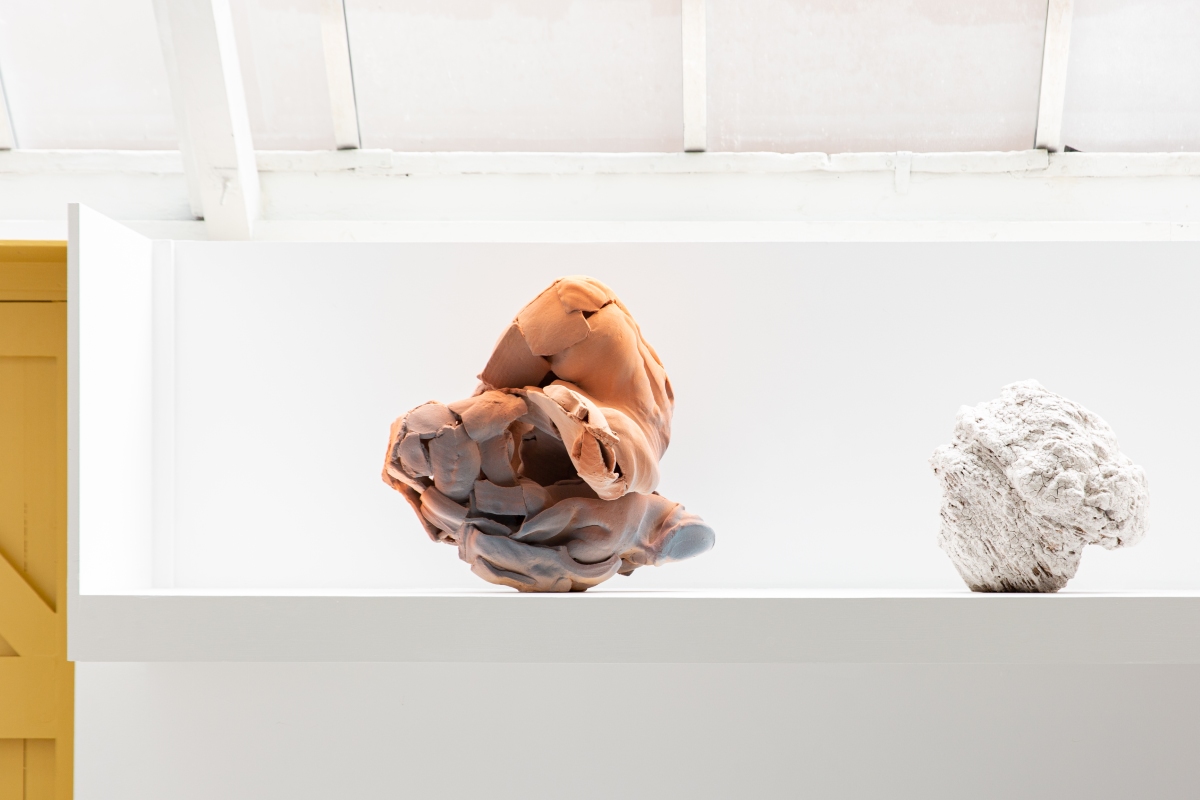
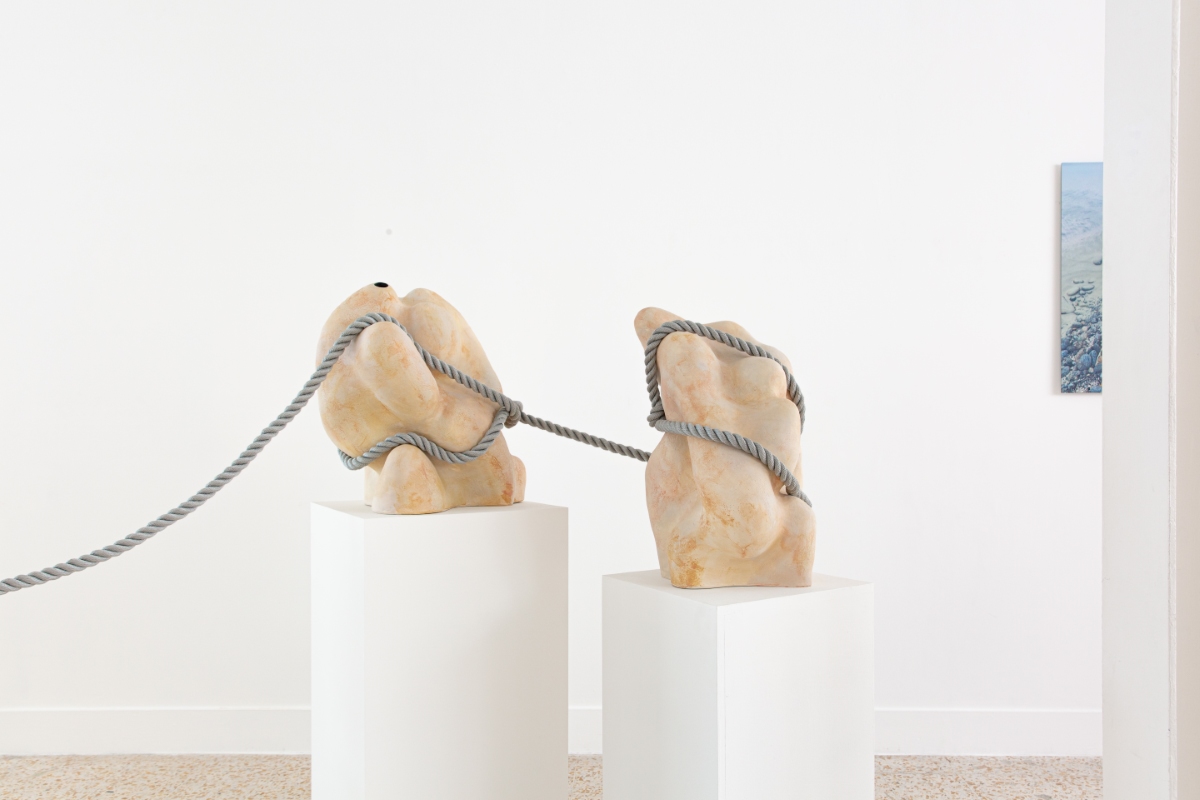
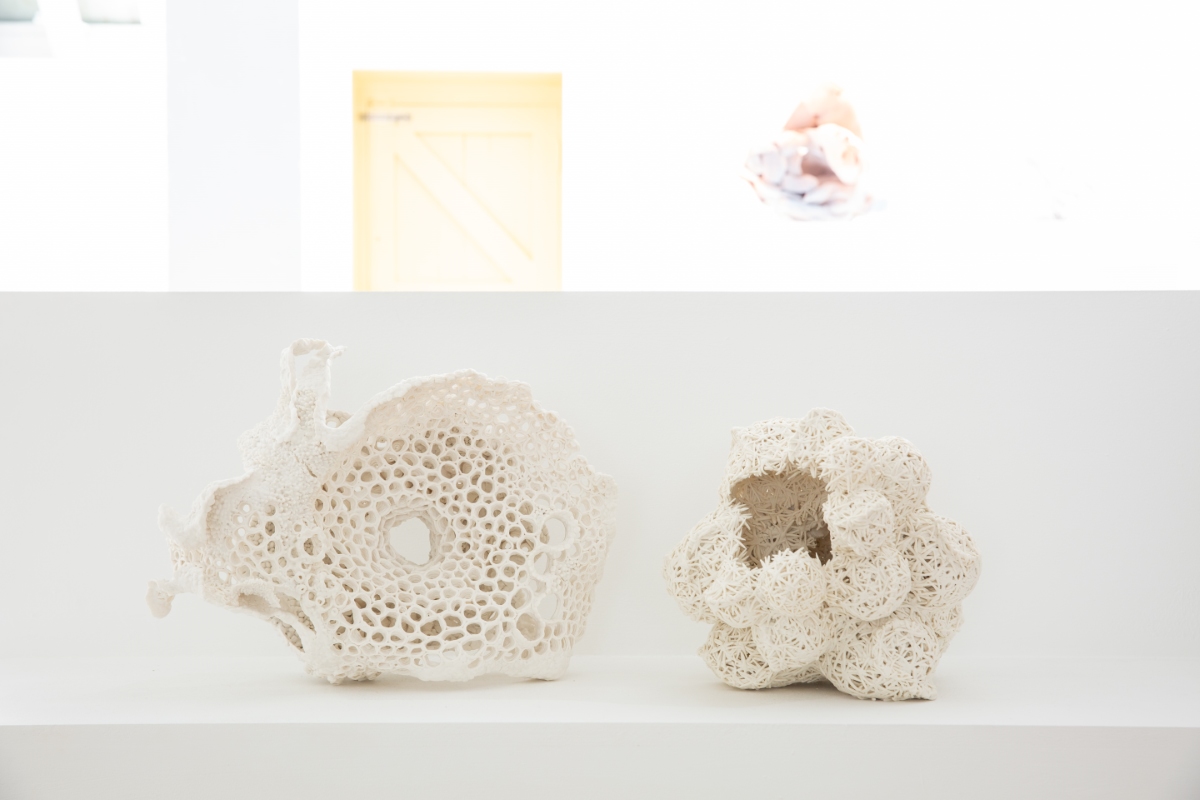
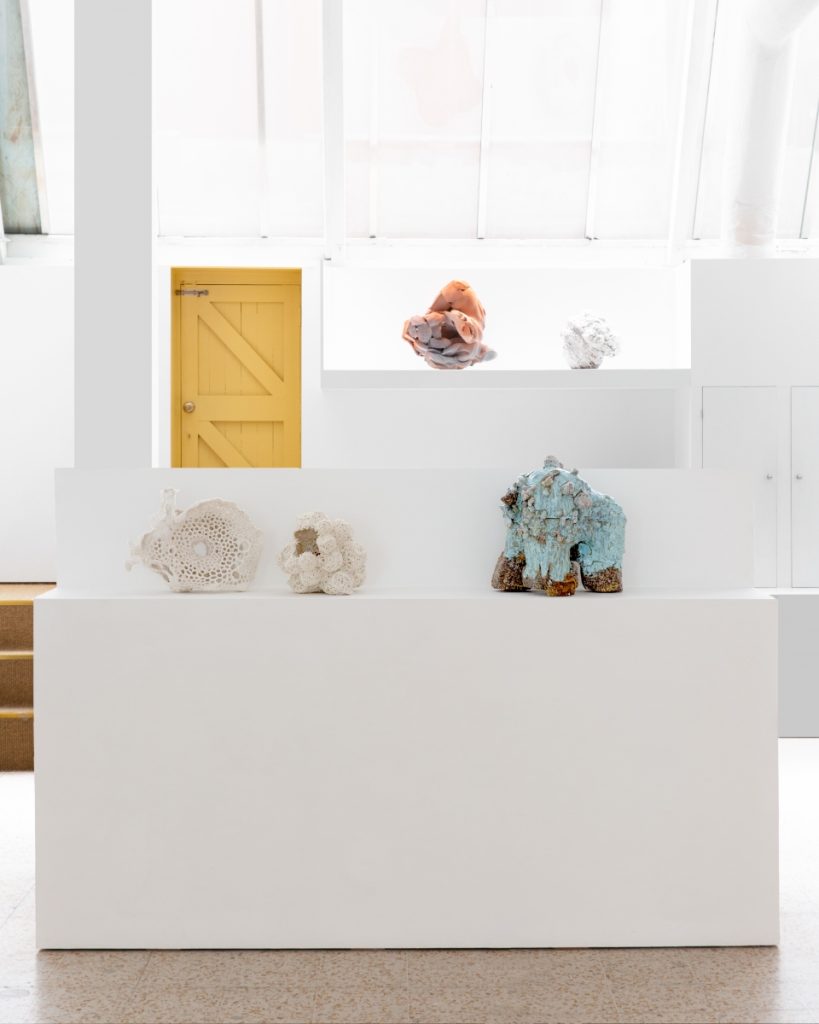
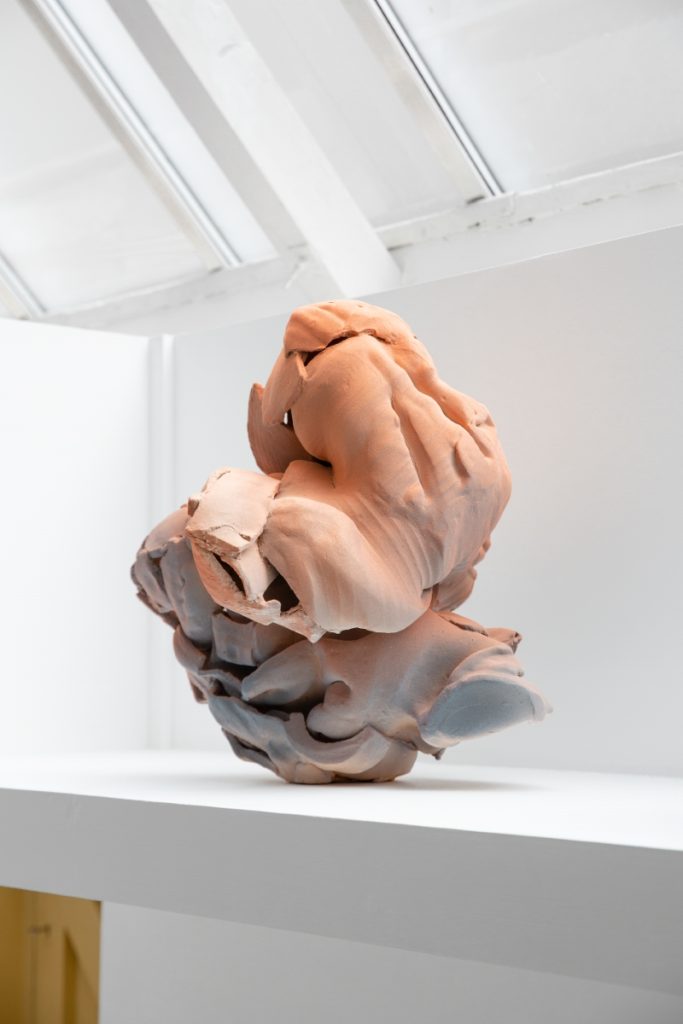
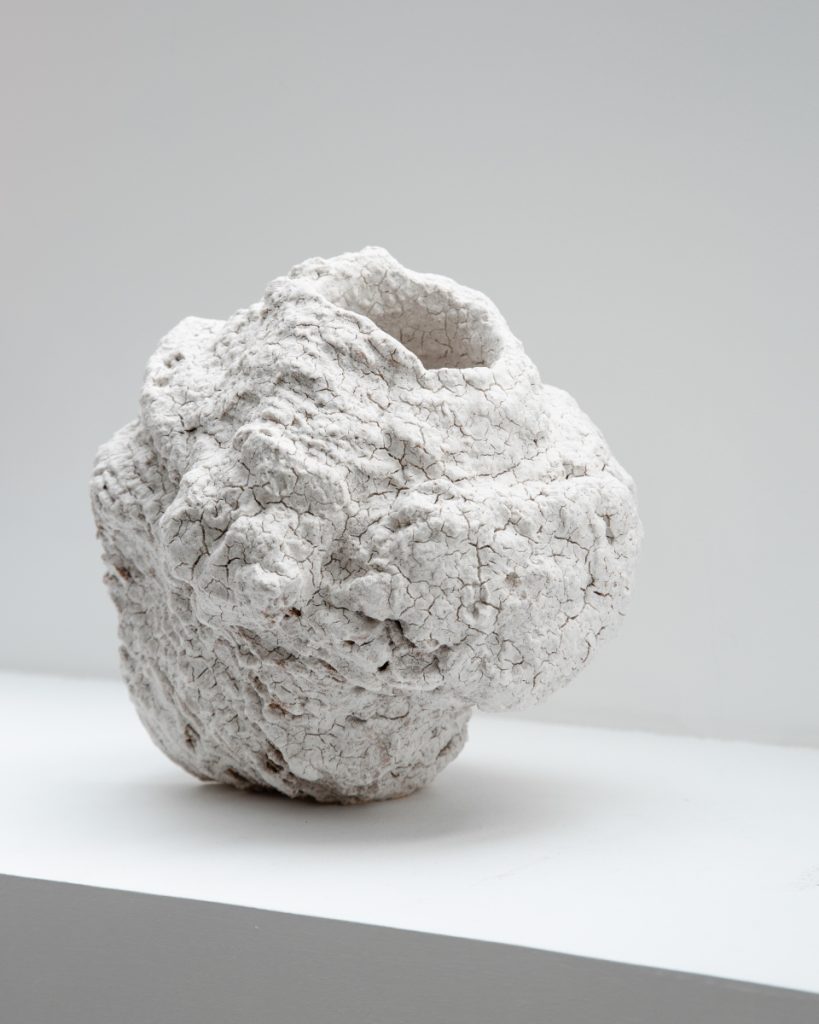
Mella Shaw’s ceramic practice also calls upon corporeal form and matter towards creating relics for collective loss. Mella’s ‘Sounding Lines’ series researches the overuse of marine sonar and its devastating effects on whales’ sonic communication that result in numerous beachings. The works in this show derive from this project, and compassionately engage with the ways in which non-human and human bodies are deeply entangled. Her ‘Unheard’ works are sumptuous, androgynous bodies, bound in dense marine rope, so as to hinder or constrict their movements. The accompanying film presents the artist dragging the ‘Sounding Line’ corpsed sculpture across the Hebrides coast, further entwining contemporary ceramic with performance as to expand its guise beyond display and static form.
The artist’s bodily impulses towards the physical takes form throughout the show, in sculpture, deconstructed vessels or wall pieces, each offering somatic and fleshly semblances. At the same time, they allude to the unique figures of the artists who make them, covered in layers of engobe and slurry, each with their own gestural inclinations and shaped by surrounding environments. Such interplay between clay and maker greatly informs Jiwon Park’s practice, as she seeks to capture expression through moments of coalescence and resistance. One can imagine the scenography at the studio, where gestures and mark-making serve as archives for haptic impressions in a joint choreography, with indents and curves recording the gentle push and pull with material.
Similarly, this sensual movement is observed in Anne Marie Laureys reconstructed sinuous shapes and the velvety glaze of her sculptural works, whilst Aneta Regel’s lumbering characters reside with latent animated energy, both powerfully conveying the same emotional commitment within the making process. As such, they capture the kinetic and physiological states of clay, a matter in ongoing metamorphosis, still very much in flux after firing.
The material liveliness of clay also offers an insight into the essence of place. It innately carries properties as local matter produced by geological shifts and distinct weather systems (the allure of a yellow London brick found amongst its Loess silt and chalky deposits). As a material rooted in both earthly origins and mass manufacture, ceramic offers a nuanced understanding between our environments and objects as multivalent stuff, dually earth- and hand-made in material and conceptual reciprocity.
Luke Fuller enjoys these dualities, producing works that at first glance offer subterranean or sedimentary registries, as if dug out directly from the bedrock. These affinities bind the work to an organic aesthetics, in the same way we may typically assign the pastoral frame to rurality, however, Luke’s visual references to the industrial extraction of raw materials demands a re-assessment of the environment altogether. Ultimately, the work highlights these tensions as we create and contextualise place.
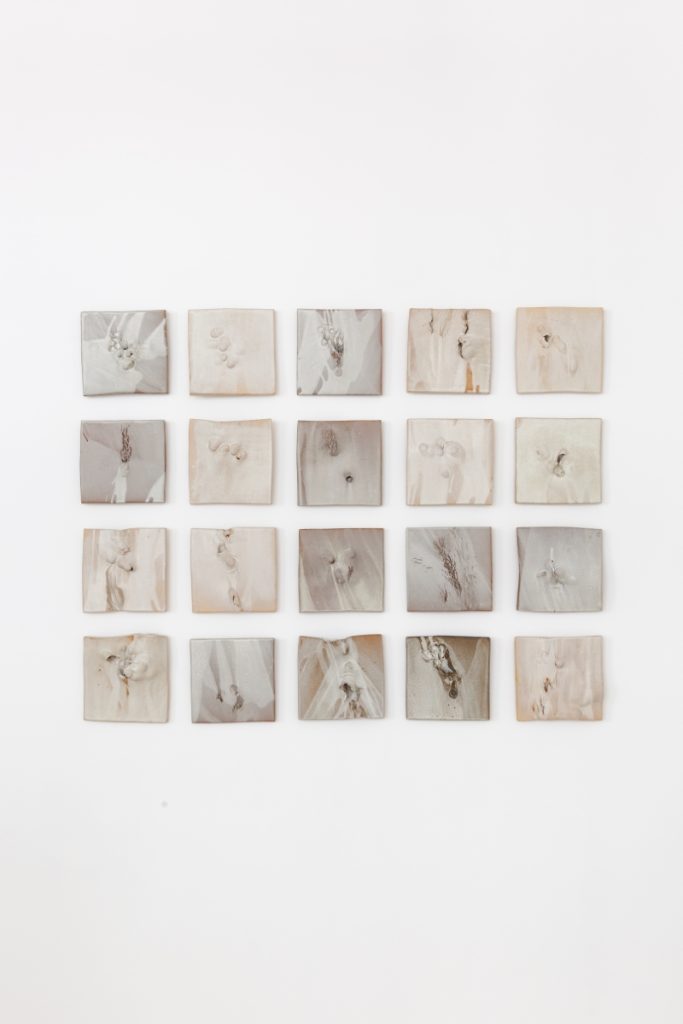
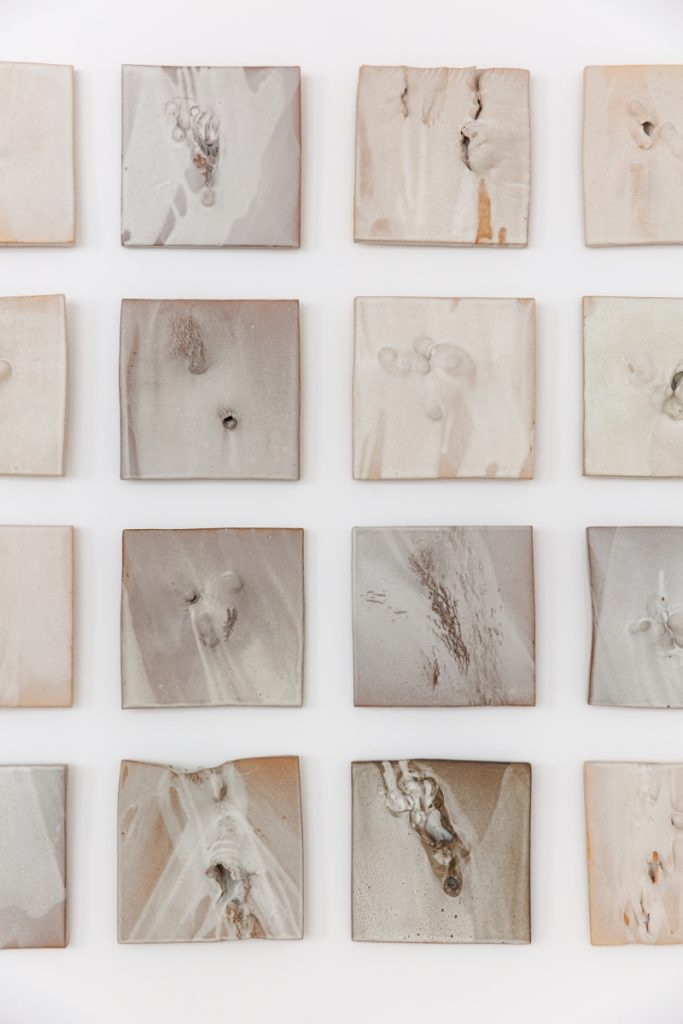
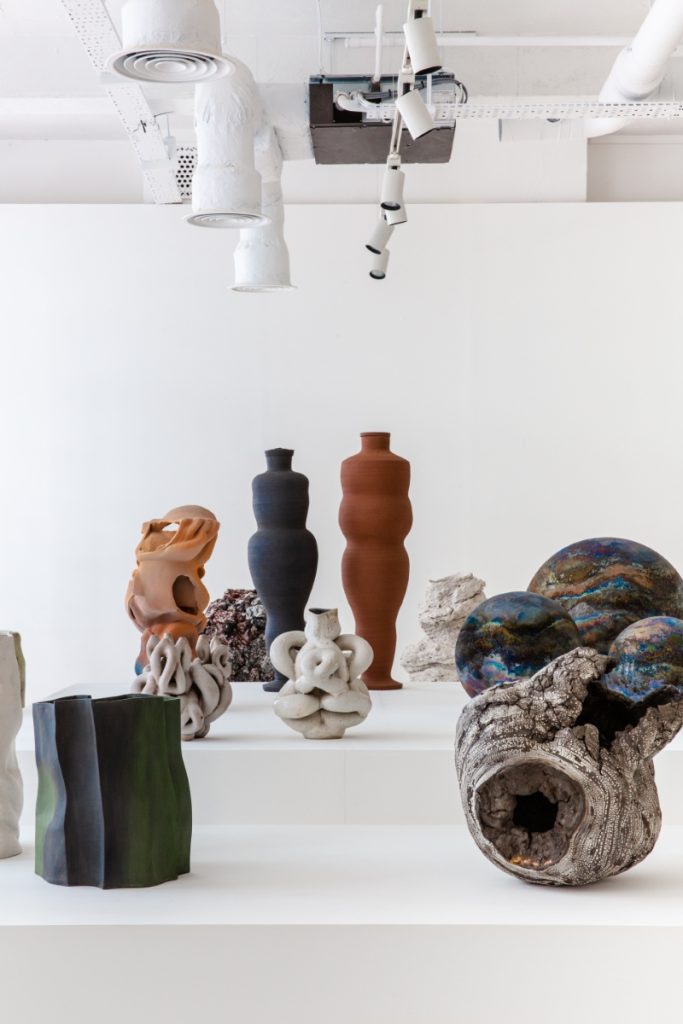
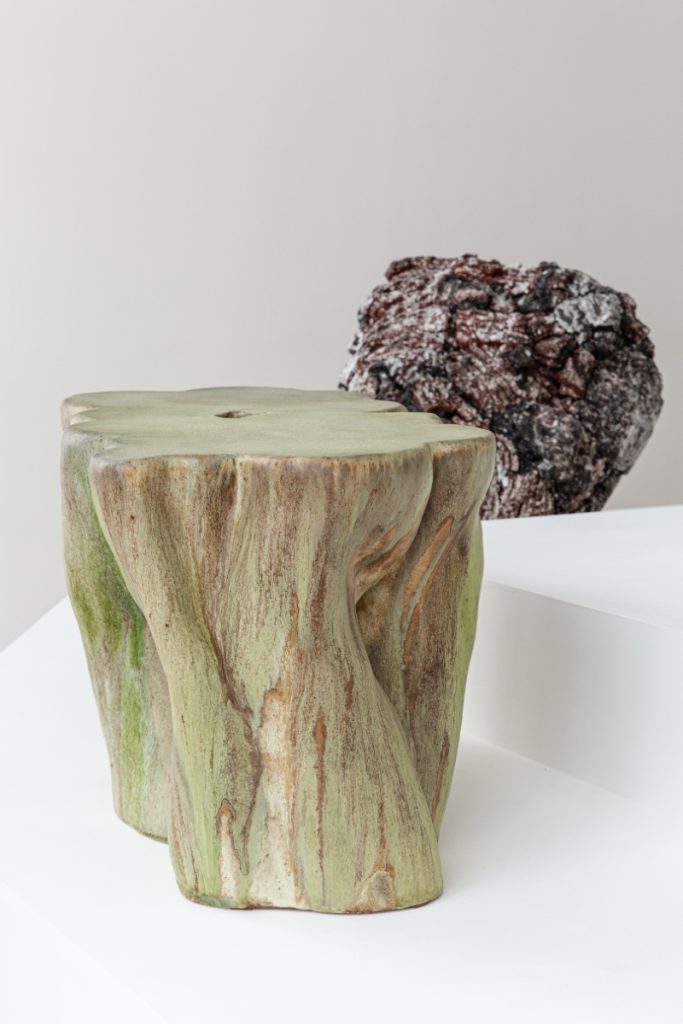
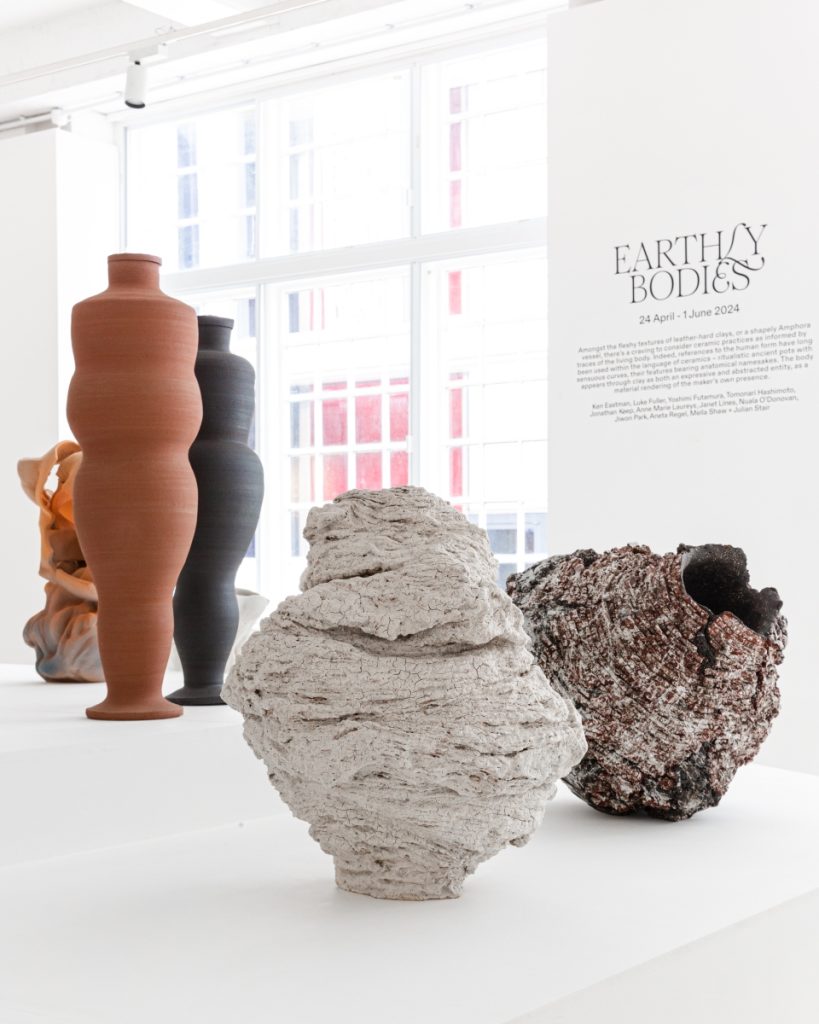
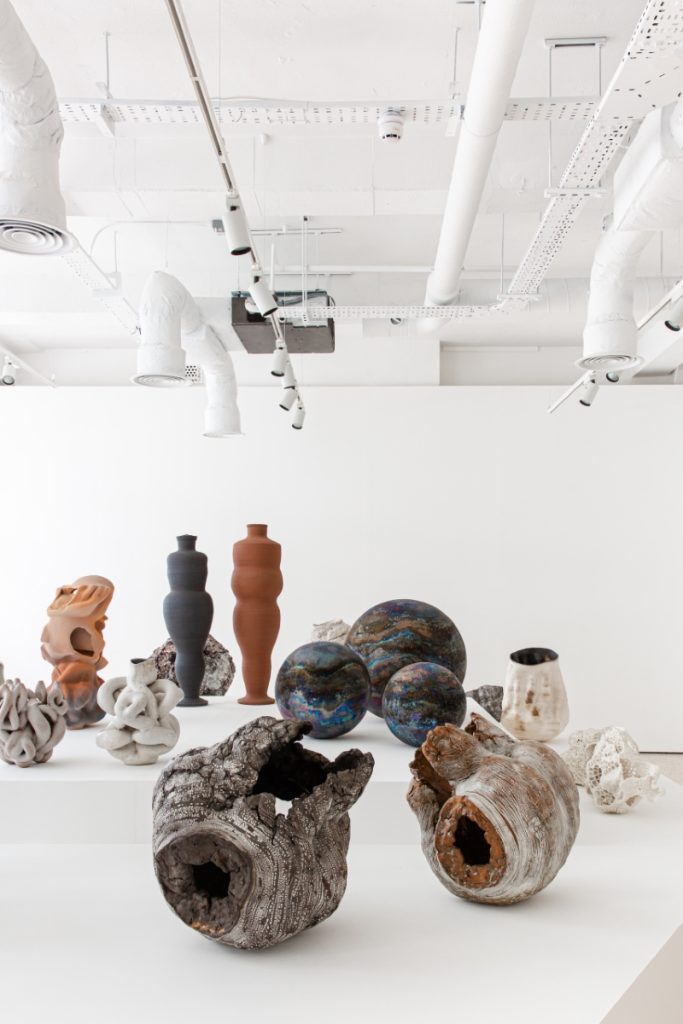
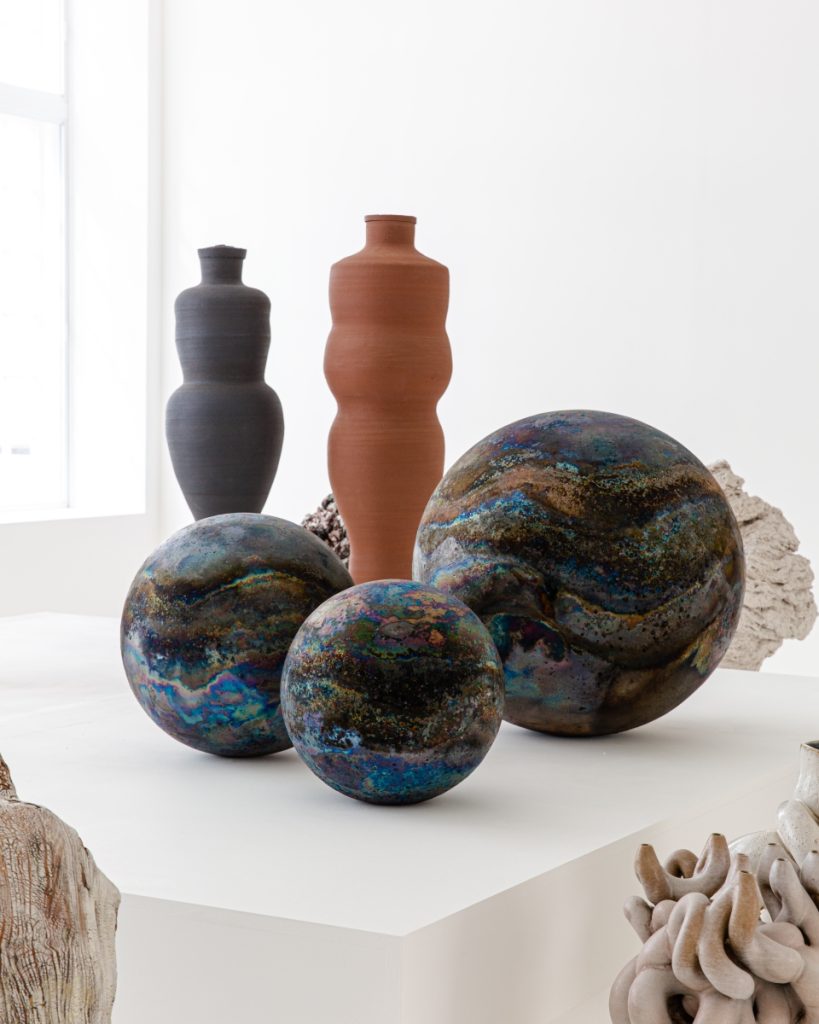
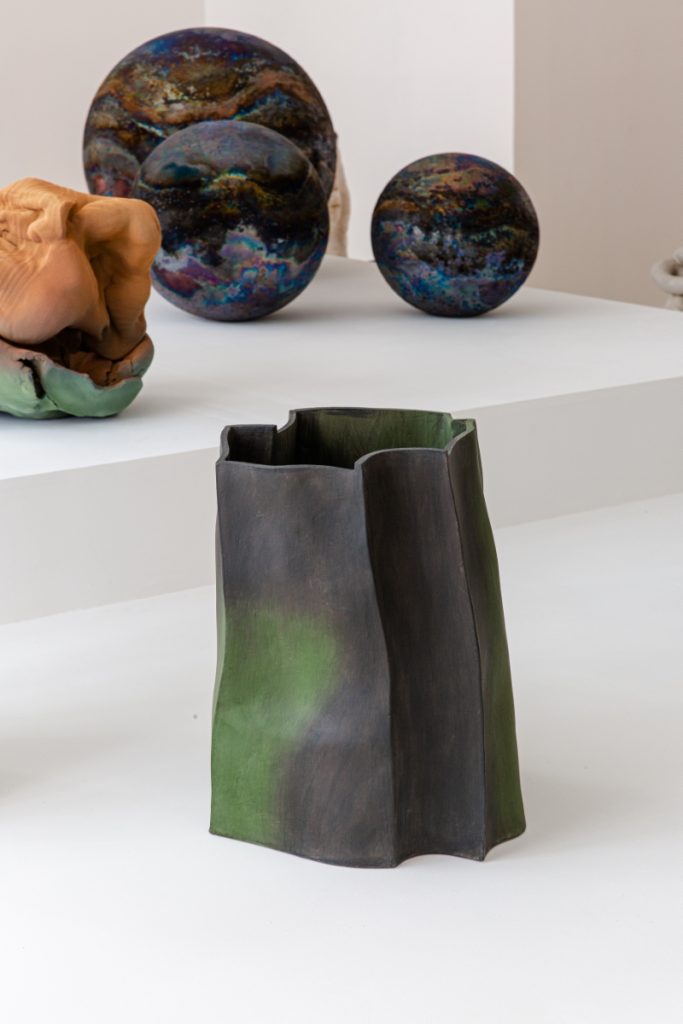
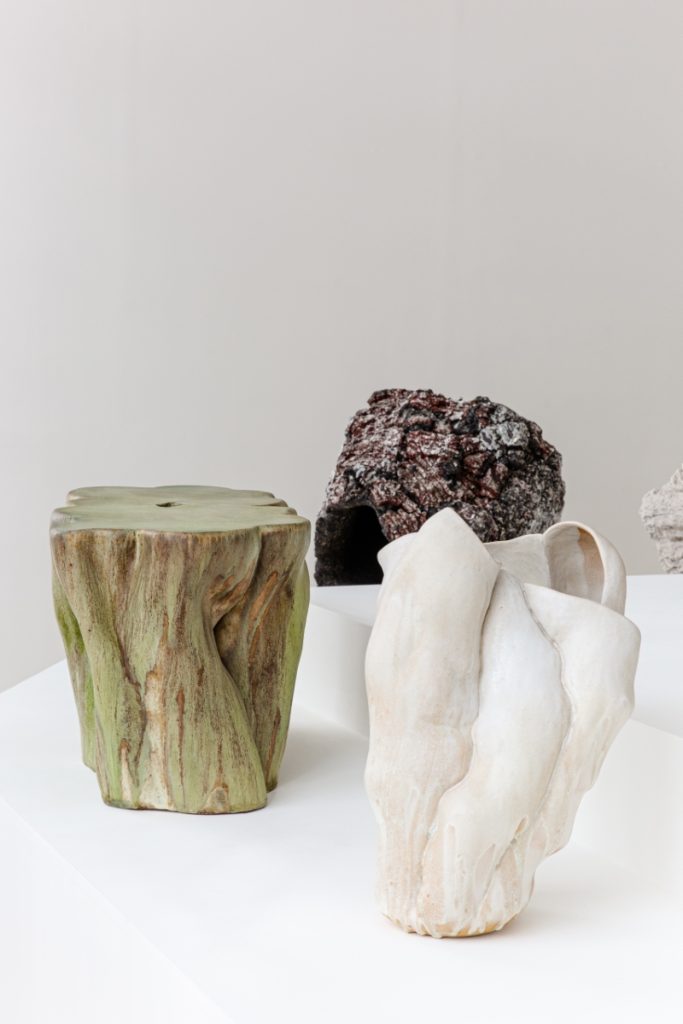
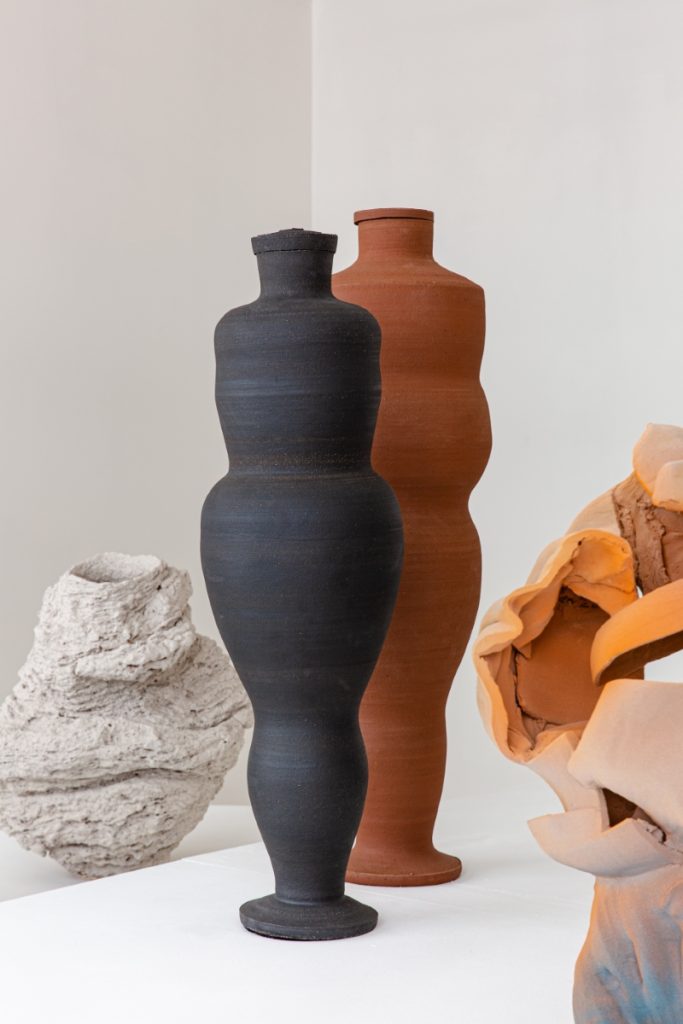
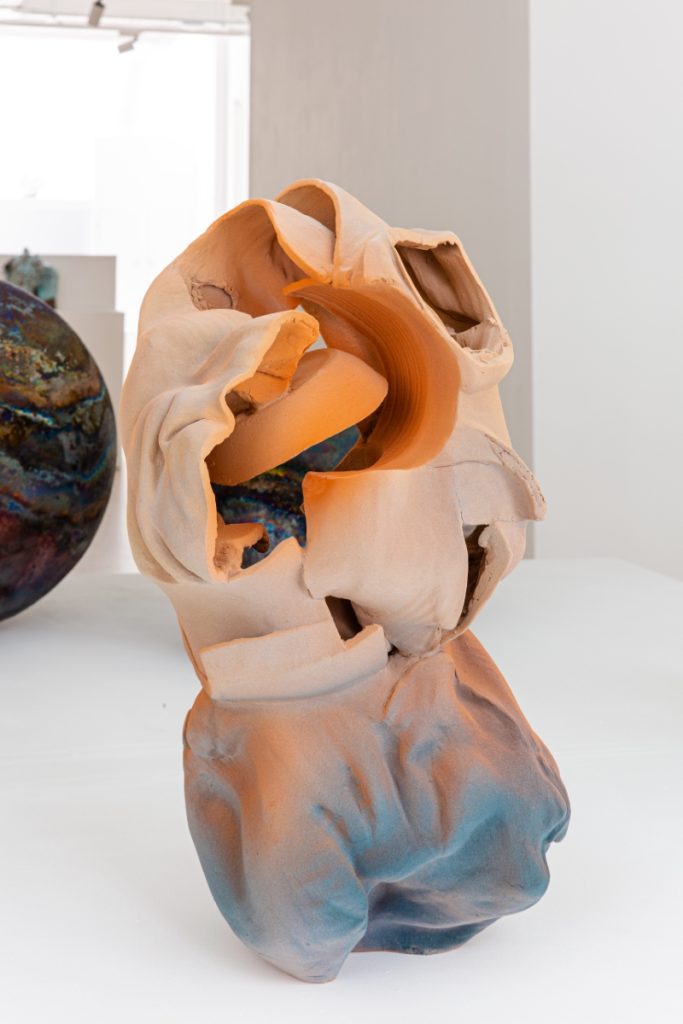
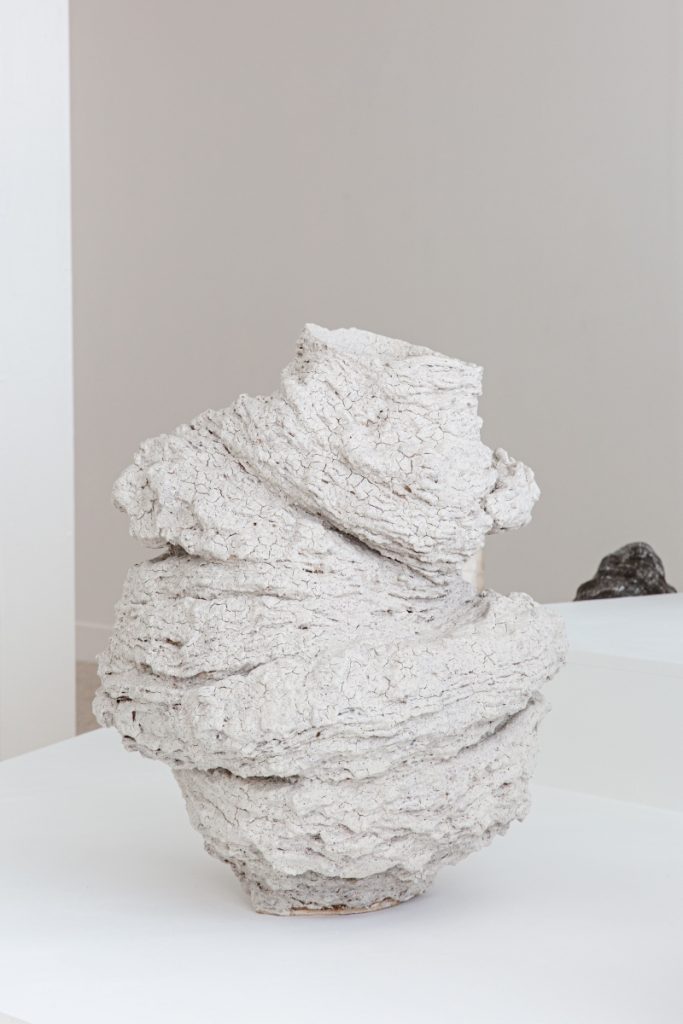
The dynamic ceramics of Yoshimi Futamura also hold echoes of landscape, with her heavy, ruptured sculptures evoking the seismic quakes of her native Japan amidst the cracks. Conversely, Janet Ann Lines’ delicate coiled vessel forms resemble the shelter of caves or arthropod-like structures, influenced by the socio-geographic dynamics of the refugee crisis in Greece, her works embody signifiers associated with habitat and welfare. The resemblance to oceanic fauna in Janet’s vessels appear in Nuala O’Donovan’s intricate and frenetic works, manifesting as abstract living organisms, with inspiration drawn from a fascination of natural sequences that reveal spawning growths and beings. Jonathan Keep also explores emanating patterns in his intestinal-shaped vessels, presenting computational code as tangible through combined traditional and digital making. The computer-aided coil built vessels render the code with interior volumes and apertures akin to traditional ceramic vessels, with curves and crevices formed through a knotted manipulation of the code by the artist.
The exquisite surface qualities of the ceramics with ‘Earthly Bodies’ evoke the touch of the epidermis or topographic membrane, inviting an ambient envelopment by bodies and terrains. Ken Eastman and Tomonari Hashimoto achieve uniquely seductive patinas through many coatings of diluted oxides or carbonation, revealing rich subtleties that blend modesty with indulgent splendour. The culmination of the works in the exhibition bears profound witness to bodily plentitudes within contemporary ceramics. Through material and poetic resonance, corporeality persists. Consequently, ‘Earthly Bodies’ provokes environmental and anthropological readings as it enlivens the interplay between clay and crafted figure.
Contact
info@sarahmyerscough.com
Sarah Myerscough Gallery
34 North Row
London W1K 6DH
United Kingdom
Photos by Anwyn Howarth


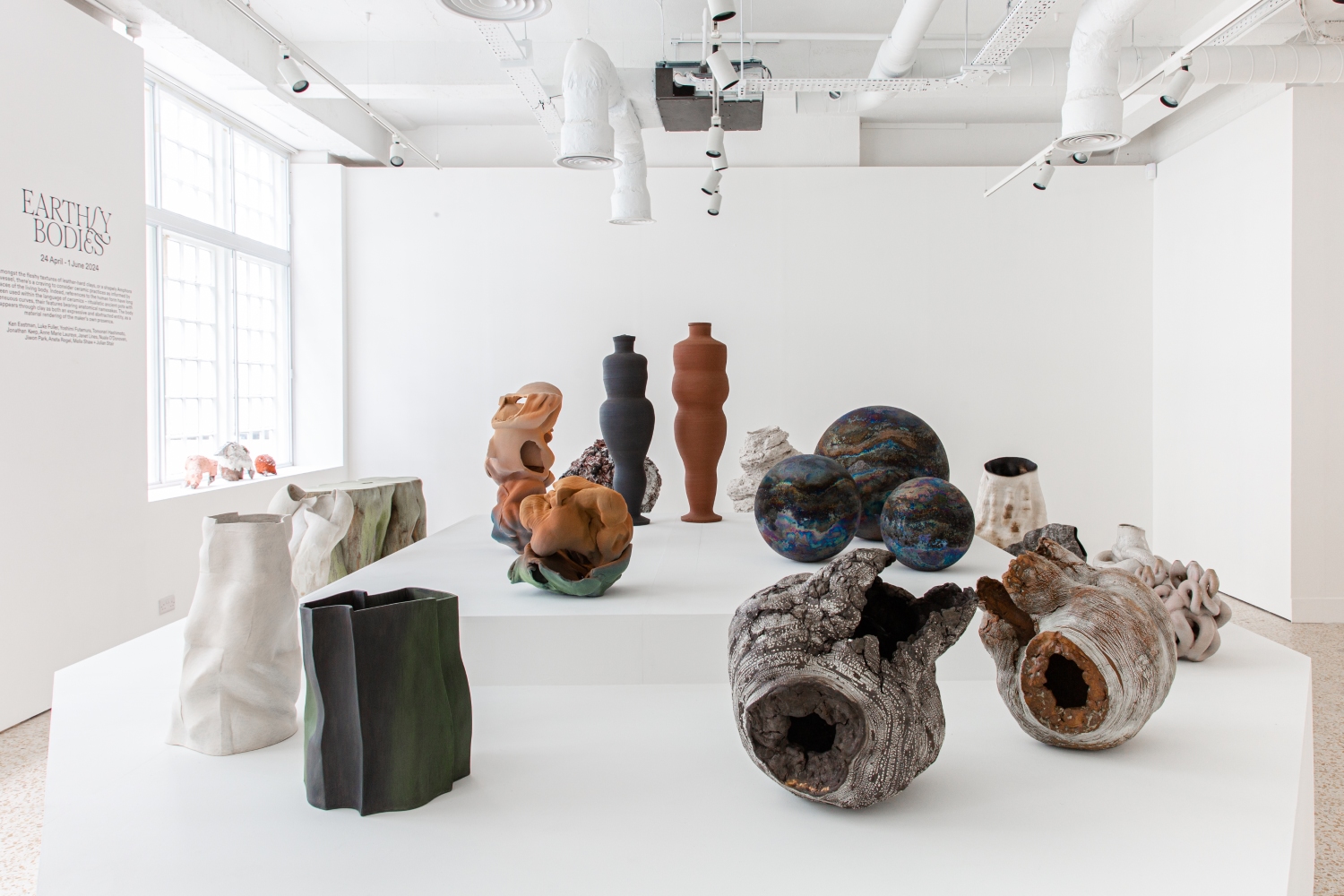














Comments 1